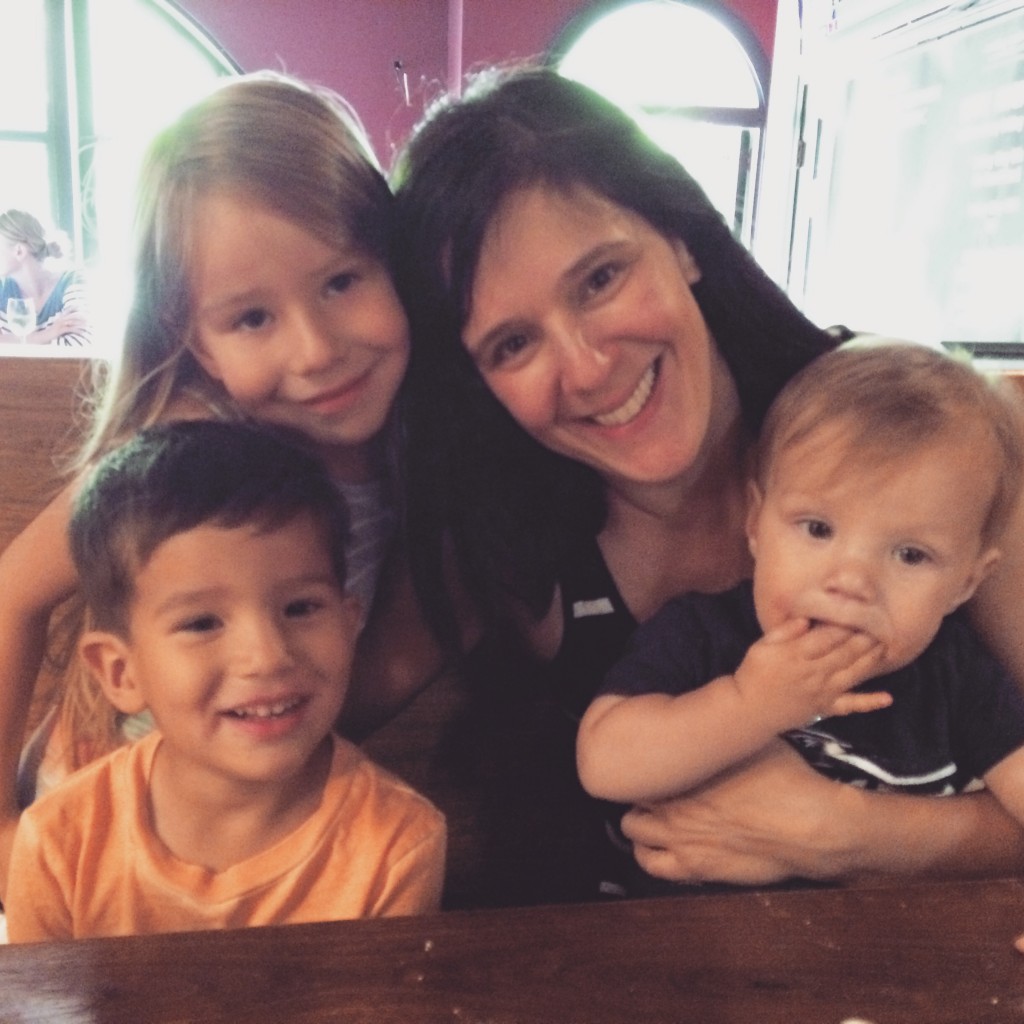This post was originally published in 2015 under the title, “Why you want ICAN on your VBAC team.” It is still as pertinent today for women seeking choices and respect in their future births.
Guest post by Mariah Sixkiller.

There are some moments in life that feel bigger than you can process while they’re underway. Moments you know you’ll remember forever—where you were, what it smelled like, how you felt. There are only so many of these in life, but the moment I realized I could VBAC was one of them. I was in my local yoga studio, attending a “VBAC Basics” workshop hosted by a nearby ICAN coordinator named Barbara. I remember exactly how our circle of women looked in the dim light of that peaceful space, and I remember Barbara’s words: “Let me guess, ladies—Failure to progress? Failure to descend? Macrosomia?” Heads nodded, including mine. She was speaking to me, to us. And she was about to open up a world of possibility, hope, and redemption for me.
It all started in November of 2009, when I endured a traumatic cesarean at the hands of a doctor who pushed me on induction, epidural, and ultimately non-emergency surgery. I had gone into the birth headstrong and unprepared—I didn’t think I needed a doula and figured natural birth would flow easily. I over-trusted my provider—a manipulative man who told me in the moments before surgery that I “would not care” how I had my baby once she was in my arms. He could not have been more wrong. As so many cesarean moms have experienced, I felt deeply violated by the experience. I was in pain, traumatized and paralyzed by a foggy haze of depression. I could not change my baby’s diaper, and I felt like a failure.
When I got pregnant a second time, I could not imagine going through it all again. I confessed this concern to my beloved prenatal yoga teacher, who mentioned that the studio was hosting an ICAN “VBAC Basics” workshop the following month—which I immediately signed up for. And so my VBAC journey began that day in September 2011, as ICAN’s Barbara explained how often OBs use “Failure to Descend” or “Failure to Progress” as excuses for a cesarean, even when the baby’s heart rate is perfectly fine and labor is proceeding at its natural—albeit slow—pace.
I remember sitting in that circle of women feeling dumbfounded. She was telling my story. She understood what I had experienced. It was obvious others felt this too. The camaraderie and empathy in the room were palpable, and the emotions flowed in this atmosphere of trust and empowerment. Woman after woman told her unique story, though common threads emerged—manipulation by providers, trauma, and a desire to feel hopeful and to heal through VBAC.
Barbara armed us with information: cesarean and VBAC rates in local hospitals, risks related to not just VBAC but also repeat cesareans, how to identify signs of physician backsliding on VBAC commitments, and more. The simplest and most important tool I carried out of the workshop that day—and one I tell all friends seeking to VBAC now—is to ask your provider what their VBAC success rate is. If they cannot tell you, either it’s bad or they don’t take it seriously enough to know. Either way, it is a sign that you need a different birth team—one that will stand with you in your VBAC journey as a true collaborator who respects your choices. With Barbara’s words echoing in my head, I asked my provider that very question at my next prenatal. When he said he didn’t know, I knew it was time to make the leap to a birth team whose VBAC success record spoke for itself. I made the transition to the amazing George Washington University Hospital midwives team at 20 weeks pregnant. And I set out with complete commitment and focus on achieving my VBAC.
It was Tuesday, February 7, 2012, that my contractions began. I was five days overdue, and it was a watershed moment for me. I had never experienced natural contractions and was elated once the rhythmic churns set in. I had prepared and was ready. The next four days were the hardest of my life but I remained focused, positive, and committed to the natural process throughout—thanks to the steady support of my determined husband, powerhouse doula, and patient midwives. In the early hours of Saturday, February 11, it was finally time to push, and I headed to the hospital. Two hours later, my sweet 7 lb. 11 oz. baby boy, Samuel, was finally in my arms. The birth was the greatest feeling of my life—a beautiful, euphoric moment of total redemption and pure joy. It was everything I had imagined birth could be. I felt so proud, so happy, and so strong.
My elation was so extreme that I shouted just moments after the birth: “I have to do that AGAIN!” And so I did. On June 12, 2014, after 18 hours of labor, I had a second VBAC with the amazing GWU Hospital midwives, who let me pull my 8 lb. 15 oz. son William out of my body and welcome him to this world with my own hands. Much like the first VBAC, I felt deep relief, pride, strength, and elation after the birth. But unique to this birth, I relished the confidence I felt in my body. I could tell my body knew what to do. It all just felt so natural, so right, so peaceful. As it should be.
The journey from my deeply traumatic November 2009 cesarean to the incredibly empowered June 2014 2VBAC was a long one. There were many people who helped me get there, and one of them is ICAN and the local coordinator who ran that August 2011 workshop. ICAN helped me understand that anger can be channeled to hope. ICAN helped me understand that trauma can be healed. ICAN helped me understand that acts of true bravery often require acceptance of vulnerability. I will be forever grateful to ICAN for being part of my birth team.

Mariah Sixkiller lives in Washington, DC with her husband Casey, her daughter Anna and her sons Sam and Will.